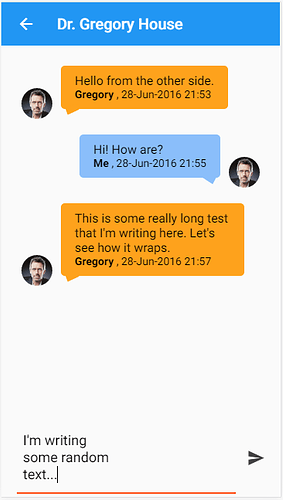Hey @Bastian,
Thank you for that code, it really helped me get started. I ended up writing this component:
import {Component, ViewChild} from '@angular/core';
@Component({
selector: 'elastic-textarea',
inputs: ['placeholder', 'lineHeight'],
template:
`
<ion-textarea #ionTxtArea
placeholder='{{placeholder}}'
[(ngModel)]="content"
(ngModelChange)='onChange($event)'></ion-textarea>
`,
queries: {
ionTxtArea: new ViewChild('ionTxtArea')
}
})
export class ElasticTextarea {
constructor() {
this.content = "";
this.lineHeight = "22px";
}
ngAfterViewInit(){
this.txtArea = this.ionTxtArea._elementRef.nativeElement.children[0];
this.txtArea.style.height = this.lineHeight + "px";
}
onChange(newValue){
this.txtArea.style.height = this.lineHeight + "px";
this.txtArea.style.height = this.txtArea.scrollHeight + "px";
}
}
I know that this.ionTxtArea._elementRef.nativeElement.children[0] looks pretty bad. If somebody has any other suggestions on how to get the <textarea> element that’s a child of the <ion-textarea>, please let me know.
USAGE:
I ended up using the component like this:
<ion-item>
<ion-label style="margin:0px;"></ion-label>
<div item-content style="width:100%;">
<elastic-textarea placeholder="Type to compose" lineHeight="22"></elastic-textarea>
</div>
</ion-item>
To get the below look at the bottom of my chat page:
But it’s also usable on its own:
<elastic-textarea placeholder="Type to compose" lineHeight="22"></elastic-textarea>
I hope this helps somebody until a better solution is created.
